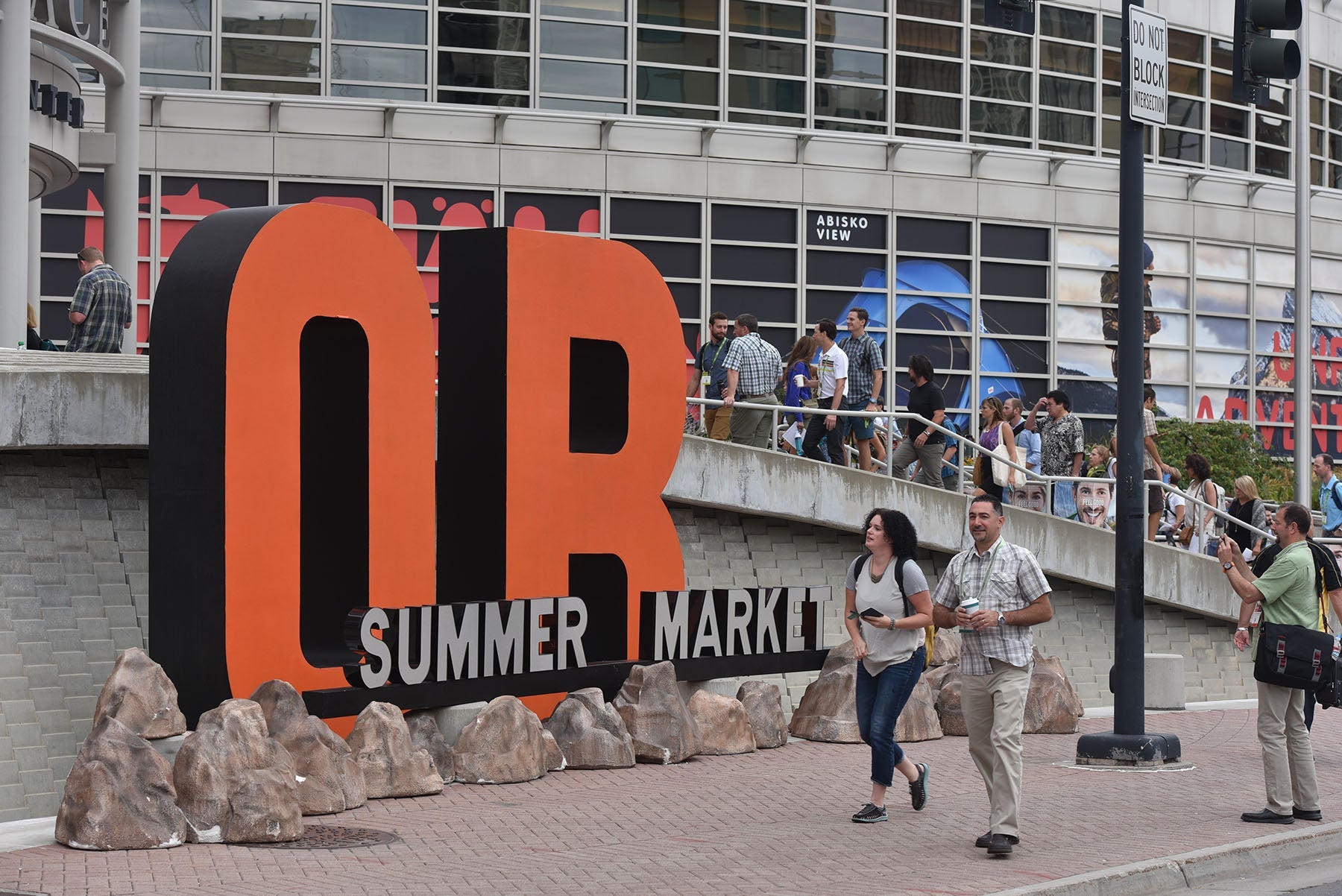It’s a common gripe in the halls of Outdoor Retailer: the trade show is no longer relevant because it happens too late in the buying cycle. It’s not a sentiment that the show organizers take lightly, and they have recently made what appears to be a concerted effort to listen closely to the gripes. Over the past several months, OR has been poring over attendee feedback from past shows as well as responses from a recently completed qualitative survey of key industry brands, suppliers and retailers, conducted by Chicago-based research firm, Stax.
It’s “the deepest and broadest effort to chronicle product development, introduction and cascading sales cycles across multiple categories ever in the outdoor industry and certainly in North America,” said Darrell Denny, executive vice president of sports and apparel and e-commerce at Emerald Expositions, which owns and operates the show.
Outdoor Retailer is poised to launch a web-based survey today to a broader segment of their constituents, with the intent of gauging the wants and needs of these stakeholders, and to ensure that what they are offering is what people want around show platform and timing. It is limited, however, to retailers, reps and exhibitors of the show. (Keep an eye out for it in your inbox, and if you didn’t receive the link but want to respond, email research@outdoorretailer.com.)
The results of the combined of the interviews and web-based survey could very well lead to some big changes.
The show has, in part, already responded to previous attendee and survey feedback. For Winter Market 2016, OR bumped its dates up from the end of January to just after the holidays (and before final ordering deadlines). The shift came with a drop in retailer attendance, however, as well as more grumbling in the aisles and in surveys. “Retailers were very clear in our post-show surveys–and in discussions during this year’s Winter Market–that they wanted the show during the weekdays and not over weekends,” Denny said. That’s partly why OR has made the decision to move the Winter Market dates again for 2017 and cut it down to just three days.
The big question for show attendees, though, is whether these changes, and any potential future changes will make their schedules and show decisions easier . . . or even more complicated.
It Began with the Tribe
There is something inherently tribal about the big trade shows. They are as much festivals as they are open markets to debut and sell product. More and more, as sales become relegated to regional rep shows or even private dealer events, the value of big shows lies in this joining of the tribes. But is that enough? How will trade shows continue to make themselves relevant as the outdoor industry matures, and how can the tribe possibly keep up when it must attend a full calendar of events all year long?
In 1982, the OR show was a brand new idea–a plan to to shift from a California rep show (run by long-term outdoor vet Larry Harrison) and bring together a handful of core brands at exhibition halls in Las Vegas away from the more traditional sporting goods shows where outdoor brands had been lumped. It was to be a gathering as much as a marketplace. At the time, Greg Thomsen–who had worked his way into the industry the way so many aspiring dirtbags do today, as a mountain guide and retail-shop employee and co-founder of the now-cult outdoor brand Wilderness Experience–decided he liked the vision of Outdoor Retailer, a show that brought together brands like his and Yvon Chouinard’s Patagonia that were born from the passion of the outdoors. Thomsen said he bought the very first booth at that inaugural show.
“We had been doing the (now SIA) Snow Show at the time, but this was pure outdoors, like-minded individuals,” Thomsen said. “We switched over to it right away.”
Indeed, everything was simpler and more focused at the time. In the 34 years since, the OR show ballooned from the original 93 exhibitors to a record-breaking 1,555 brands at the 2015 Summer Market. But that’s just the beginning.
OR (twice a year with Winter Market added in 1990) has become just one in a massive circuit of shows requisite for outdoor industry brands. The result? Manufacturers, reps, media, textile vendors, non profits and other businesses are faced with a full calendar of expos that can be time-consuming, expensive, and exhausting.
The philosophy of how sales work at a big trade show has changed, too. In the 1980s most manufacturing was still based in the United States, making for far shorter times to turn product around after order. Over the past three decades, we have seen a systemic shift of manufacturing to Asia (and more recently Central America), which increased dramatically when China joined the World Trade Organization in 2001. That shift has rippled into the sales dynamic at trade shows. The resulting longer manufacturing lead times have led to the rise of regional rep shows where early orders make for easier forecasting for shipments across the Pacific. That shift has built up into a schedule of non-stop trade shows, topped by the big event in the Salt Palace.
“Over the years, the regional rep shows have become so sophisticated and well managed that most of our business is done there, earlier,” said Thomsen, now adidas Outdoor managing director. “OR has become a kind of a culmination of the season where all the managers and PR people can see everything . . . and get a sense for trends. Nowadays, OR is less of a buying show and more of a show where brands can show what they stand for.”
The fact that so much writing of orders gets done earlier creates a constant murmur in the halls of OR, SIA, Interbike, MAGIC and other major national trade shows. The usual complaint is that retailers and manufacturers are wasting resources and budget at these expensive productions that could be more efficiently allocated somewhere with a far better ROI.
“The big question is why even bother with these big over-the-top shows at all?” asked Daniel Abrams, founder of up-and-coming apparel manufacturer Flylow. “I think that regional rep association trade shows could replace the national shows. Why not just have regional shows?”
It’s a good question–and one that OR and SIA (as well as Interbike, SHOT, European shows and others) have made an effort to address–considering that retailers, reps, and manufacturers stare down a full year of often expensive travel and time out of the office. Much like OR, SIA has been proactive in looking at its dates. Starting in December 2017, the Denver-based show is moving from early February to early December. Those shifts in timing don’t change the fact that trade shows are expensive, however.
Thomsen states that OR is his biggest marketing expense of the year. At Summer Market, for example, booth space costs an average of $33.35 per square foot. Plus, exhibitors face the added expenses of the booth itself: building it, storing it, staffing and paying to bring sample product lines out of production and to and from the show. The biggest challenge of all, though, is that trade show attendees have to go through this process over and over again throughout the year at multiple shows.
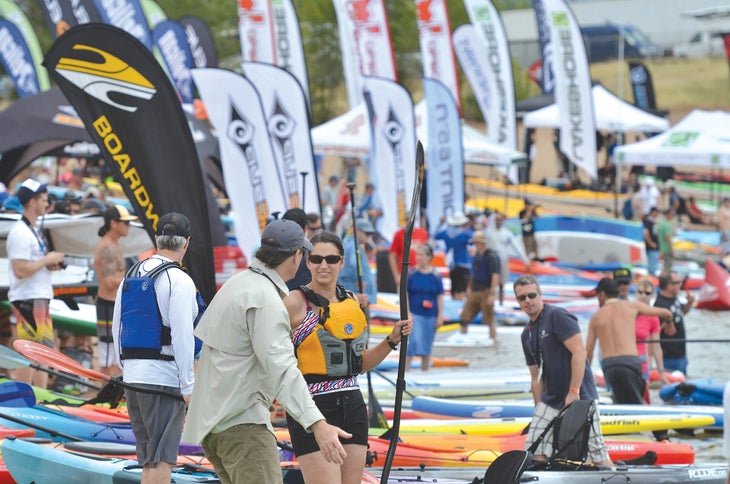
Moving Targets
The truth is that brands, buyers, reps and even media need what the gamut of shows offer up, whether that be down-and-dirty writing orders while looking at product lines on Spartan walls or getting a sense for the entire line and philosophy of a brand while drinking craft beer at a big show. All these outlets keep a brand viable. But is it even possible to attend all these events? How to pick and choose? What do you miss if you stay at home or look for (possibly cheaper) alternatives? While OR and SIA have engaged in response to attendee needs, changing dates and even more drastic maneuvers are not necessarily panaceas.
“It’s extremely difficult to plan a season of trade shows, especially given the moving targets that the shows have become recently,” said Brian Limoges, senior merchandising manager at online retailer Evo.
He points out that the timing continues to get more and more challenging. Later show dates come too late to really impact plans and buying deadlines, but earlier shows happen before the season has really had a chance to play out.
“We carry product across many categories (ski, snowboard, bike, skate, wake, surf, apparel, footwear) from a few hundred brands so it’s often difficult to get particularly strategic about the planning,” Limoges said. “We need to take into consideration people’s personal lives in addition to travel schedules and due dates during various buying cycles.”
That planning creates headaches for big shops, but the crowded docket of trade shows is even more difficult for smaller operators, who don’t have the staff and reach to be constantly on the road, leaving them squeezed in the process. The criticism from reps sounds much like that of retailers.
“The trade and rep show circuit is tough. And it’s not just the big shows,” said Todd Kerbs, an independent rep for brands including Red Bull Eyewear, Eco Vessel, and Glide SUP. “The WWSRA [Western Winter Sports Representatives Association] has something like 50 regional shows now and they have been very lackluster lately. Going to the shows is all out-of-pocket expense for me, and unless I can make decent sales calls after the shows, they’re not worth it.”
Kerbs also feels that even the smaller shows are skewed to big operators who have the reach and budget to be in more places at once. “The big companies set the deadline date,” he said. “The money they command from shops is crazy and the rest of us independent reps just try to hunt for scraps.”
Regional rep shows–spearheaded by groups like the United States Reps Association (USRA), which bundles together over 2,000 reps at seven shows throughout the year–are where the majority of orders for established brands and retailers get written. Unlike the party and spectacle of booths at OR, SIA or MAGIC which rival retail stores in square footage, the rep shows are no-nonsense, low-budget affairs where buyers and manufactures simply engage in commerce.
“As far as I’m concerned, as a retailer, not a manufacturer or media, early preview shows are great,” said Mike Donohue, co-owner of Burlington, Vermont-based retailer The Outdoor Gear Exchange. “They are focused. They are where the buying work gets done. A larger, national show later in the cycle is great for closing the loop, seeing new vendors and smaller brands, having business meetings and for media buzz.”
Seen in that light, the big shows prove their relevance as the prime-time events of the season. But it’s tough to demand retailers spend so much time out of their shops. That means the onus is on both regional and national shows, which are businesses in themselves, to find the best way to serve their customers, a.k.a. show attendees, in a way beyond pure selling.
Constant Change
At Emerald Expositions, Denny, for one, recognizes the potential pitfalls in trying too hard to keep ahead of the curve when it comes to how trade shows and selling cycles continue to evolve. “Industry production and buying cycle shifts have been gradual, not all at once and not all together,” said Denny. “So the market coming to any consensus around the best timing due to these changes has been evolutionary as well.”
Outdoor Retailer and SIA both changed their dates to be more relevant to the needs of their constituents. Now, OR is considering making even more changes in an attempt to sync with attendee cycles. Will that turn the whole system on its head?
Possibly, but for the brands that buy booths, dates are not as important as how many retailers the national shows can bring to the aisles.
“For the last few shows, I’ve been asked by retailers about taking our show spend and redirecting that investment towards other projects that they feel would be more beneficial,” said Bruce Old, Patagonia VP of global wholesale.
But that issue may have more to do with figuring out the timing of the big shows within a patchwork calendar of options, rather than the actual relevance of the show itself. By all accounts, brands do still see relevance at national shows.
“OR is still a great opportunity to see multiple retailers and have productive meetings, all in one place. The conversations that take place at the shows between retailers and exhibitors have great value,” Old added.
In his announcement for the new SIA show dates, incoming president Nick Sargent said: “This decision was made with great care and consideration given to the evolving buy/sell cycle, and an eye on the future growth of the industry. The Show’s purpose is to preview product in the best possible way for retailers to make educated and effective buying decisions when they place their orders at the appropriate time.”
Trying to maneuver too much around selling dates may not be the best solution, however. And there are even some sales-based reasons to believe that the shows do, in fact, work best later in the sales cycle.
![sm15_crowded_aisle[1] None](https://cdn.outsideonline.com/wp-content/uploads/2022/04/sm15_crowded_aisle1.jpg?width=730)
“With SIA moving to before Christmas, I do fear some sales will be lost as folks hear what will be coming out a year down the road and decide to hold off on an upgrade this season,” Donohue said. “I know I have buyer’s remorse as soon as I get on skis at the OR demo. Earlier shows focus specifically on previewing product and buying. The grassroots, regional and small shows fill that need well. They already exist.”
And not all retailers go to regional shows. The Southwest doesn’t have them, so retailers from Arizona, for example, are seeing product for the first time and writing orders at OR and other big shows, said Christian Mason, national sales manager at Bozeman, Montana-based Oboz Footwear. “The primary benefit of national shows like OR is to spend quality time with retailers. The majority of our meetings are recaps from earlier shows or they’re marketing related. But there are select territories like the Rockies, Southwest and Southcentral that really benefit from OR since the time of year and location in Salt Lake City work so well for them.”
While Thorlo did pull out of OR due to lower numbers at the winter show and Dynafit notably did not attend SIA this year, very few brands are opting out and major players, such as Columbia Sportswear, have left OR in the past only to return. There’s still a central gravity and community to the big shows that can not be replicated at sales-focused regional affairs.
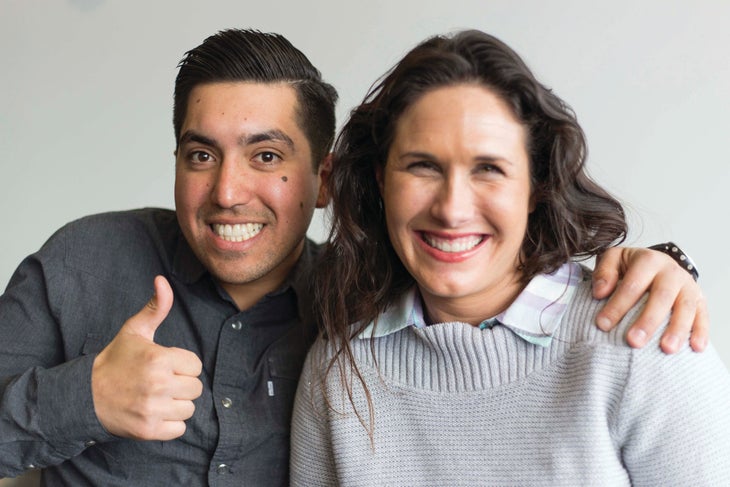
Beyond finding the perfect dates for everyone, there are other ways that the big shows can still be relevant and help manufacturers and retailers expand their business, and, if nothing else, the shows are working hard to make it easier to attend. Emerald Exposition VP and OR Show Director Marisa Nicholson pointed to the recent additions of the Retail Relations Team—Joe Bustos and Kimberly Aguilar—as steps the show has taken to respond and adapt to the needs of the attending retailers.
“Joe and Kimberly manage targeted buyer outreach and work with the show team to directly enhance the Outdoor Retailer shows by promoting attendance among key regional, national, and international retailers,” Nicholson said. “Their efforts seem to be resonating. They’ve been able to develop deeper relationships with specialty retailers, make face-to-face connections, and support the needs of the community.”
Indeed, building community is still the greatest asset of the national shows. And the attempts of OR, SIA and others to galvanize businesses via social, environmental and other initiatives that go beyond sales, such as The Avalanche Project at SIA and the Inspiration Awards at OR, have been successful.
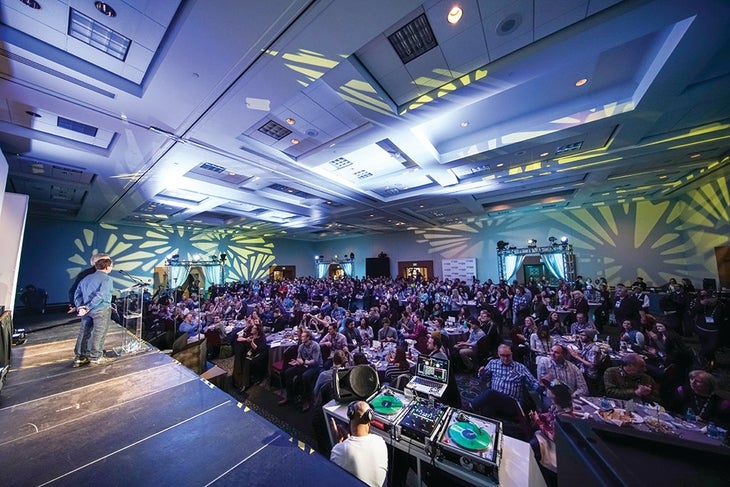
“At this past Outdoor Retailer show, I was very moved by the attendance and the support for the Inspiration Awards,” said Thomsen of adidas Outdoor, which sponsors the event. “It’s a great way to honor those individuals and companies that inspire all of us, and it made me feel very comfortable with the future ongoing relevance of the OR show and its commitment to honoring the past, highlighting the present and inspiring the future leaders of the outdoor industry.”
For the most part, attendees agree that the OR show has remained vital—and the renewed efforts of OR to accommodate them have led to extra value propositions at the show such as the Venture Out zone, which brings in brands that many classic “outdoor” retailers would not see otherwise.
“In an ideal world, the biggest benefit is to sell product,” said Peter Sachs, general manager of Lowa. “But those days really ended once retailers needed to create SKUs, fill out computer generated PO’s, etc. So today, trade shows are about branding, relationships, marketing and trying to display and merchandise your product in the best light. The SHOT show gives us a huge ROI for sales per square foot; OR provides that ROI when it comes to relationships and branding.” Sachs also explained that the national shows still make marketing directors and product developers happy—with product launches front and center in sexy booths with on-message, highly branded presentation—rather than simply being tacked up on the bland “wall grids” of regional rep and more selling-based shows.
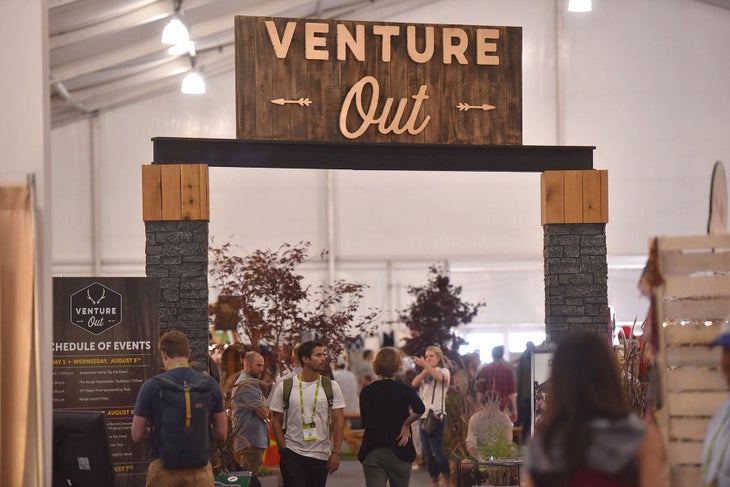
Thomsen agreed, noting, too, that Outdoor Retailer is a chance for adidas Outdoor not just to connect with its top athletes like Kevin Jorgeson of Dawn Wall fame but also to give climbers who may not reach the upper (and small) tier of professional outdoor athletes to break into a career in the outdoor industry. “We want to show them that they can make a living in this industry. They’re starting to learn there are openings beyond being professional athletes. That’s exciting, and trade shows expose a whole new avenue for them. If we give them the opportunity to grow in these areas, we can bring in a whole new generation of managers.”
The Grassroots Movement
One significant change in the industry over the past decade has been the ascendence of the 59-member Grassroots Outdoor Alliance (GOA), which bands together independent retail stores into a significant power block. The organization has been producing the Grassroots Summit show for GOA members only, and in November 2015, the group held its first Grassroots Connect show, open to non-GOA members. GOA, which works in conjunction with Outdoor Retailer and other traditional national shows, does not plan on usurping the big shows.
Instead, the GOA hopes the Connect show—which is limited to just 80 to 100 select exhibitors and a limited number of retailers who are not GOA members, making it far more intimate than Outdoor Retailer—can give both retailers and manufacturers a chance to preview what will be coming down the pipe and refine their lines before the big shows. In a way it’s a throwback to those first, close-knit days of Outdoor Retailer in the early 1980s.
“It was the most efficient show I’ve ever been to,” said Oboz’s Mason. “We visited with several retailers in a short period of time. The decor of the show needs work as the setting was very dark, but the Connect show was very productive during the day, and each afternoon they put on solid receptions. We came prepared and were able to spend quality one-on-one time with our partners.”
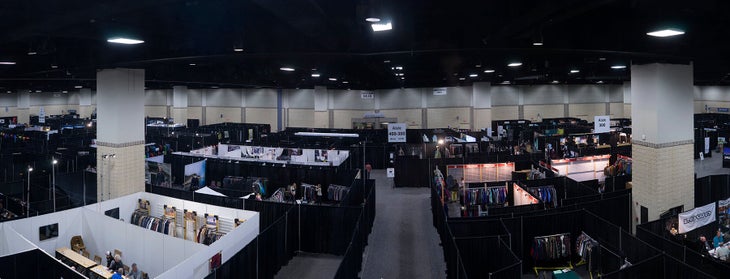
The Connect show is laser-focused on specialty outdoor retail—you won’t find the athleisure, electronics, or other out-of-core-industry brands here. “The primary benefit of Connect is that it allows buyers to efficiently see their important brands in an intimate, distraction-free environment with a focus on getting work done, whether that be buying, strategic planning, or discussion,” said Chris Howe, chairman of Grassroots Outdoor Alliance and owner of East Coast retailers Trailblazer and Denali.
Obviously, while the success of the Connect show can help brands and retailers dial in their season, it will not solve the problem of too many shows on the agenda. For most attendees, the dream scenario would be for more of the shows to consolidate as they have in Europe. There have been attempts to do that here. Outdoor Retailer tried to bring Fly Fishing Retailer under its awnings (Fly Fishing Retailer and ICAST did end up consolidating, however) and Interbike successfully folded the Health and Fitness Expo into its own aisles in 2014. Attendees have been pleased with the willingness of trade shows to listen to their needs, but they would like to see more changes.
“I think the retailers are starting to speak up about the timing and frequency of the shows, and I’m glad to hear that the shows are listening. We can’t attend every show so I would expect some consolidation, or retailers voting for the best show via their attendance,” said Patagonia’s Old.
Retailers agree.
“Frankly, SIA and OR need to merge into one show. I realize the challenges in trying to incorporate two different business models in two different states with competing interests, but it is best for everyone in the end,” said Limoge at Evo.
Consolidation in North America does not yet seem to be an option, however. In fact, the entire outdoor trade show schedule is somewhat like a chess match—with multiple-players—and it doesn’t appear that it will end any time soon. At least not till OR makes its next move.
“Of course we are concerned about potential overlap with the many important events that take place in the outdoor space,” said Denny. “It’s almost impossible for Outdoor Retailer to move to any time and not conflict with some event somewhere, unfortunately.”
He said that OR’s goal however, is to provide as much advance notice as possible—”hopefully 18 months”—to allow opportunity for some events to respond if needed.
“All key event producers need to communicate and coordinate better going forward, and I expect we will significantly step up and increase meetings among ourselves,” Denny said. “As for whether there is sufficient desire and need for any other events, that is impossible to say and puts the proverbial cart before the horse. Noting that we are going to research whether we should do anything additional is not the same thing as saying we’ve decided to do so. Right now, we are in the fact-finding stage, not in the decision stage.”
When it comes down to it, dates and selling cycles still may not be the most important reasons attendees show up.
“I see shows in a battle to remain relevant and trying to win by being first, earliest,” said The Outdoor Gear Exchange’s Donohue. “I don’t think that’s a good trend or beneficial to anyone. I’d still like to see them go back and look at what their purpose is.”
For his part, Denny, a long-time vet of both the outdoor industry and the trade show business in general, is acutely aware of what really matters.
“All industries embody an element of competitiveness among the companies, retailers, reps and, even, not-for-profit groups and associations,” he said. “However, the outdoor industry is characterized by individuals who, much more often than not, believe in the outdoors and recognize that the best chance to improve participation, access, advocacy, regulation, trade, sustainability, product assessment is to have a meetings of minds. Folks in the outdoor space recognize many of these objectives are difficult to impossible if people in the industry are estranged from each other.”
The overarching mantra? It’s still about the tribe.


